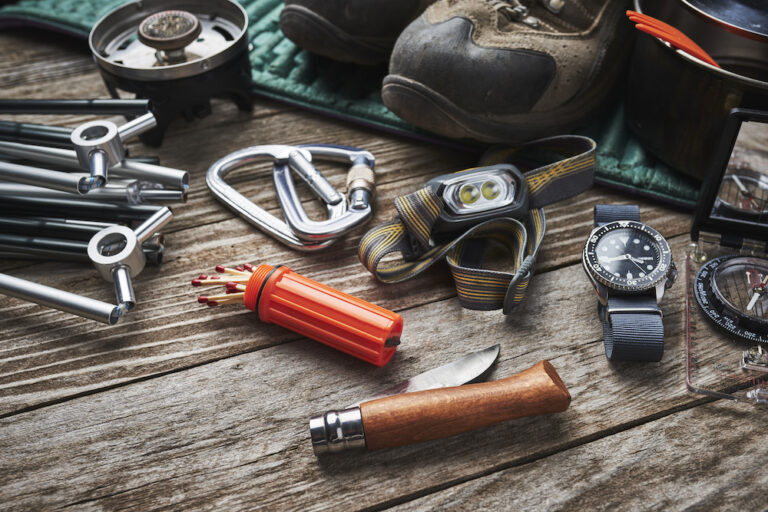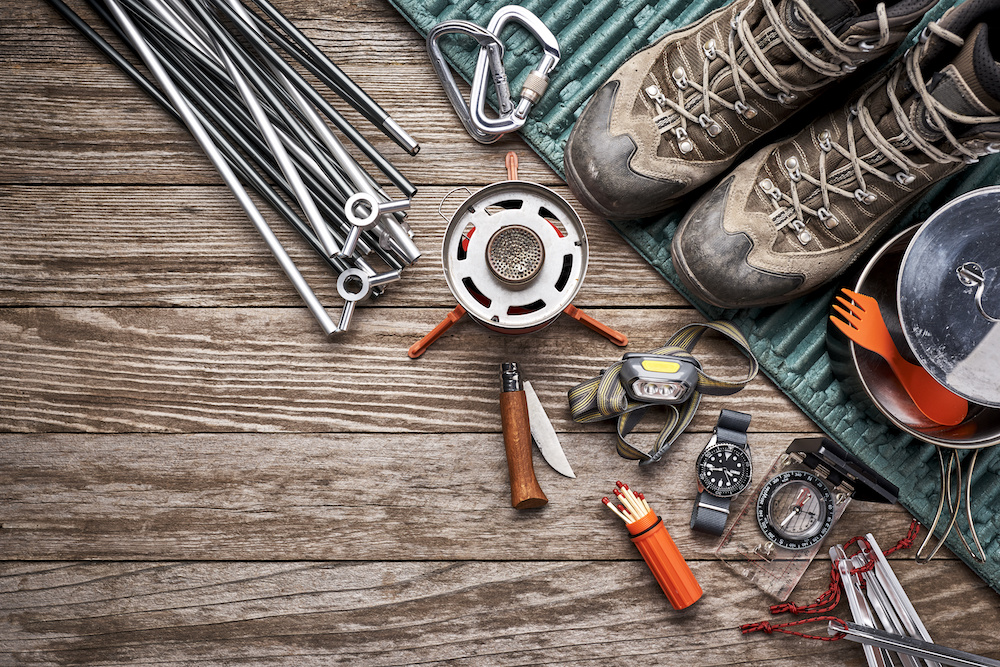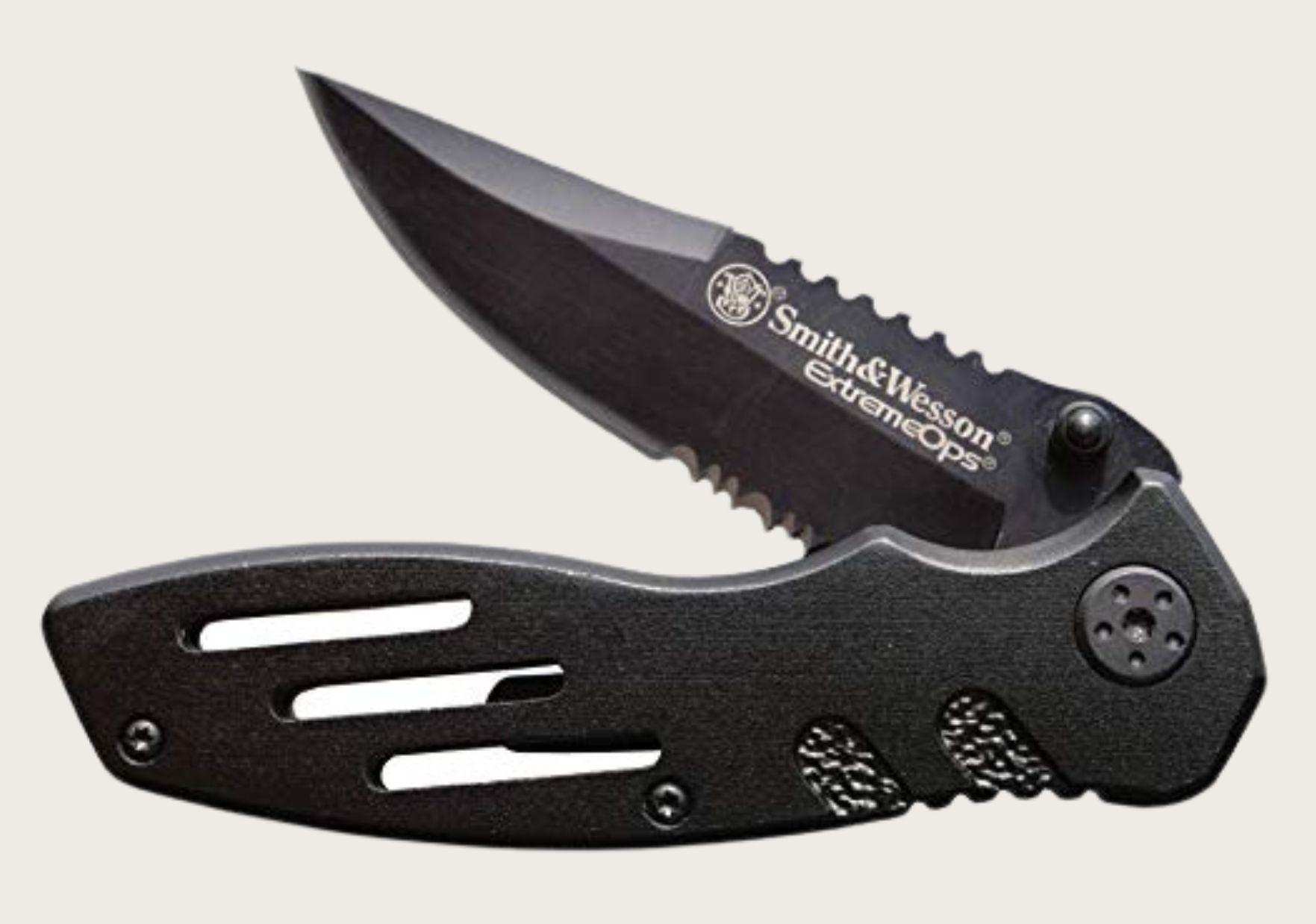Signup for our monthly newsletter and get your FREE "Tactical Gear" Guide
Essential Tactical Gear List For Beginners
- Home
- Tactical Backpacks Advice
- Essential Tactical Gear List

This site contains affiliate links to products. We may receive a commission for purchases made through these links.
When you begin making an essential tactical gear list, you’ll likely think of the bare necessities.
Water, food, and fire are undoubtedly important, but there are many other items you need to have available.
To set you on the right track, we’ll explore the most important items to consider having in your tactical gear for any situation.
Table of Contents
Essential Tactical Gear List
To help make organizing simpler, we’ve allocated all of the essentials into four primary categories.
You’ll want to make sure your gear falls into EDC items, personal kit items, assault items, and field equipment.
Sticking to these categories can ensure you’re carrying the best tactical gear to have.
1. EDC (Everyday-Carry) Items
Everyday-carry items are things you should consider having on you whether in a tactical situation or not.
In tactical situations, however, they can make a significant difference.
Our recommended EDC items include:
Tactical Backpack
A tactical backpack is the first item to have on your tactical loadout list, as it’s necessary to house all of the following items.
You’ll want to ensure you choose a style with plenty of storage for the must have tactical gear.
It’s also vital to find tactical bags made with high-quality water-resistant materials for ruggedness.
Cash and Credit Cards
It’s crucial to consider having both cash and credit cards on you, depending on where you travel.
Cash is often preferred, as it’s easy to carry, and most places will accept it as a payment method.
On the other hand, credit cards can also be beneficial, as you can charge purchases with a single card instead of wads of cash.
Tactical Wallet
With a tactical wallet, you’ll have two tools in one convenient package.
These wallets are typically equipped with necessary survival tools, such as small knives, glass breakers, and bottle openers.
Also, the materials are specifically designed to withstand plenty of wear and tear as well as weather changes.
If you want to keep your identification, money, credit cards, and permits safe, a tactical wallet is the way to go.
Swiss Army Knife
The value of a Swiss army knife cannot be understated, especially as it’s small enough to fit in your pocket.
You’ll have a multitude of tools in one package, depending on the model you opt for.
Ensure you at least have a set of pliers, a small knife, and a screwdriver handy.
Tactical Watch
Although they can be expensive, tactical watches are a phenomenal upgrade to your must have tactical gear.
They have innovative technology specifically designed for survival situations.
Some higher-end models even have digital and analog time, GPS capabilities, and built-in smartphone functions.
Sunglasses
Even though they may seem trivial, sunglasses are among the first things military personnel ensures they have on them.
It would help to shield your eyes from harmful UV rays, but they’re also required for visibility during the day.
Phone or Radio
An easily accessible method of communication cannot be understated in any situation.
Depending on where you’re venturing off to, you should consider bringing your phone or a radio, or both.
Radios are likely more reliable in the wilderness, as you might not have access to a cellphone signal.
Also, consider giving everyone in your party a radio to ensure open lines of communication.
In a survival situation, connecting with the outside world can be essential to your safety.

2. Personal Kit Items
Personal kit items are the best tactical gear to have that you’ll need for your individual needs.
These can range from prescription medications to personal hygiene products.
Prescribed Medications
If you have specific prescriptions you’ll need to take, make sure you bring enough doses.
Ideally, you’ll want to have enough medication for your entire stay as well as a few extra days.
Depending on the bottle’s size, it can often be preferred to bring the entire prescription with you.
Portable Power Bank
In today’s society, more people are relying on technology to get them around.
You’re unlikely to have a power source readily available without a portable power bank for tactical situations.
These unique devices hold plenty of charge for several days at a time and are designed to charge electronics.
Fortunately, they’re often pocket-sized and lightweight, making them easy to include in your tactical loadout list.
All you’ll need are the correct charging cables for your devices, and you’ll be ready to go.
Our recommendation is to consider a solar-powered power bank so that you’ll always have a charge available.
Personal Hygiene Products
Keeping your body clean and sanitized is of the utmost importance when choosing essential tactical gear.
There are many personal hygiene products for you to consider, including:
- Shampoo and conditioner
- Soap
- Deodorant
- Toothbrush and toothpaste
- Dental floss
- Shaving razor
- Hand sanitizer
- Pads and tampons
First-Aid Kit
Bringing a first aid kit can save your life, which is why you must find the right one for your needs.
It can often be preferred to make one from scratch, as you can customize the items within it.
Also, you’ll find that it’s easier to double up on some first-aid essentials you use most often.
Tourniquet
If it’s not included in your first aid kit, you should always consider purchasing a tourniquet separately.
These tools are designed to help prevent blood loss from significant injury.
Whether you have to use it on yourself or someone else, having one can mean the difference between life and death.
Spare Clothing
Regardless if you’re hunting, camping, or in a tactical engagement, having spare clothing is ideal.
You’ll want to ensure you have enough clothes for the majority of your trip in your essential tactical gear bag.
It would be best if you also considered having spare items to help you cool down or warm-up, depending on the weather.
Rain Gear
Being outdoors for a few days and nights means you’ll experience different weather conditions, so you must have protective clothing.
Always make sure you bring rain gear with you, especially a poncho.
Ponchos are available in several nondescript colors and can be folded down into small packages.
They are also incredibly lightweight, so they will be an easy essential to keep on you.
3. Assault Items
You never know when you’ll come upon hostile situations.
Whether you’re a civilian, law enforcement officer, or military personnel, these assault items are recommended:
Tactical Knife
Tactical knives are significantly different from small survival knives, as they are meant for combat.
In instances where your firearm might be unusable or inaccessible, you’ll need a reliable form of self-defense.
You can find tactical knives in several styles, ranging from bowie knives to KA-BARs. They’re also equipped with different blades, but we highly recommend those made of carbon steel.
Whichever knife you bring, make sure you’ve sharpened and tested it to refrain from packing and bringing blunt knives.
Firearm
As expected, make sure you have your firearm on you. Store it in a secure place, whether in a holster or a CCW pouch.
You should also check your weapon before packing and ensure you clean it adequately before your trip.
The firearm should be ready to fire, safe, and reliable enough to save your life.
Extra Magazines and Ammo
If you intend to bring a firearm, it’s essential you also carry extra magazines and ammo.
It’s challenging to predict how much ammo you’ll need in an active situation, though.
On average, most people recommend having two to three extra magazines.
Weapon Cleaning Equipment
It’s important to remember you’re not going to have access to the same at-home luxuries when on an adventure.
That said, you’ll be responsible for maintaining your weapon without your standard maintenance items.
Bring weapon cleaning equipment to make sure your first line of defense is always ready to go.
The items you need should easily fit into a small MOLLE pouch and stored on the outside of your bag.
Alternatively, you can keep it in a Dopp kit, which should make it easy to store in the main compartment of your tactical bag.
Tactical Flashlight
Visibility at night is essential when setting up shelter and keeping an eye on your immediate environment.
You’ll also find that it’s the best way to look for targets in complete darkness. Similarly, they can provide clear cave or tunnel vision, as these are dark places you might need to traverse.
There are two main types we would recommend: handheld and mounted flashlights.
Mounted flashlights are affixed to your weapon and can quickly be toggled on and off as needed.
Handheld models are likely to light up a larger area but can also be heavier.
Regardless of the flashlight you choose, make sure you also consider bringing extra batteries.
These additional batteries will ensure you’ll have a constant source of power, even when you stay longer than planned.
Plus, you can’t really be too sure of the battery life since you might use your camo flashlight as frequently as expected.
4. Field Equipment
Your field equipment could also be referred to as survival gear.
These items are most important for ensuring you have everything you need to survive outdoors, including:
Tactical Trauma Kit
Tactical trauma kits are significantly different from first-aid kits and can often be preferred.
You’ll find equipment to deal with more significant injuries, such as broken bones and substantial bleeding.
Typically, they will have splints, hemostatic dressing, tensor bandages, tourniquets, elastic bandages, and more.
Shelter
A shelter can cover various options when you’re outdoors, whether it be a tent, tarp, or sleeping bag.
Ensure you have a good source of shelter depending on where you’re headed to shield yourself from the elements.
For example, insulated sleeping bags are suitable for winter, while tarps are for rainy environments.
Fire
Starting a fire is one of the first things to do in survival situations, as it’s required for health, food, and water.
You’ll need multiple methods of starting a fire that is easy to manage, even for beginners.
Waterproof matches are a great option, as are Zippo lighters, windproof lighters, and flint and steel.
Water Purification
You can survive significantly longer without food than you can without water.
Water purification, like fire, can be achieved using several methods.
We highly recommend a purification straw, which allows you to drink water from any source.
You’ll also need to consider bringing additional filters to prolong the longevity of your purification straw.
Alternatively, you can use water purification tablets, which you can also use with most water sources.
Compass and Maps
Even if you have a GPS, having a compass and map allows you to navigate without relying on technology.
It would help if you bring topographical maps of your entire area, so you can effortlessly find your way through unfamiliar terrain.
Rope/Paracord
Paracord is highly recommended for any survival or tactical situation because it serves many purposes.
It can be used as a life-saving measure, to make a tent, or as a necessary convenience (such as drying wet clothes).
Paracord can be purchased in numerous ways, whether in the form of a bracelet or keychain.
Conclusion
When planning your essential tactical gear list, you will find that you have a lot to go over.
Not only will you need basic survival gear but EDC and assault items at the same time.
With the items we listed earlier, you should be well-equipped to handle relatively any situation.

